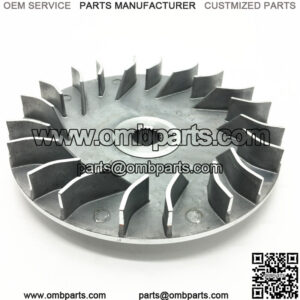What Is Riding The Clutch And Why Is It Bad?
Riding the clutch is partially depressing the clutch pedal. This keeps the clutch system partially engaged with the flywheel, leading to accelerated wear on the clutch disc, flywheel, and pressure plate.
If you ask, what is riding the clutch on a motorcycle? It is the act of partially holding the clutch cable while riding.
Here’s the right way of shifting gears, the driver will depress the clutch pedal to disengage the transmission from the engine. Then, he’ll shift to the right gear and remove his foot from the clutch pedal to return engine power to the drive wheels.
If the driver removes his foot too quickly, he’ll feel a definite lurch as the engine and transmission re-engage. On the other hand, if he releases the pedal too slowly, it’ll cause the clutch to slip against the flywheel. Of course, clutch slippage in this condition will cause premature wear.
However, some amount of clutch system component wear cannot be avoided. But with the right manual driving (gearing/shifting) techniques, the wear can be minimized by releasing the clutch properly.
When wondering how bad is riding the clutch, note that it can cause clutch slipping and accelerated clutch component wear. Remember, riding the clutch differs from ‘coasting’ or ‘freewheeling.’ Freewheeling is when the driver depresses the clutch pedal fully, allowing it to roll from inertia or downhill.
Freewheeling does not pose any danger to the vehicle, but it can be dangerous since the driver trades the ability to accelerate quickly, if necessary. Although, it is a common practice when rolling over speed bumps via inertia.
How Do You Know If You’re Riding The Clutch?
Riding the clutch puts more pressure and friction on the clutch components, wearing out the clutch faster. When you depress the clutch pedal to downshift or upshift, do not remove your legs too quickly or too slowly.
The engine and transmission should be spinning at the same speed before taking off your foot from the clutch pedal. Taking off your foot too quickly will cause a lurching feeling. Removing it too slowly will cause slippage. How then should you know when you’re riding the clutch?
If you notice you’re always touching the clutch pedal with your foot during the drive, you’re riding the clutch. Another scenario is if you are fond of not completely taking off your foot from the clutch pedal after shifting gears, you’re riding the clutch.
What Happens If You Ride The Clutch?
How bad is riding the clutch? Obviously, riding the clutch, while driving, is not good. Hence, refrain from doing it. Partially depressing the clutch or resting your foot on the pedal will put more friction on the clutch disc and flywheel. This will also lead to accelerated wear on the clutch unit.
How Do I Stop Riding My Clutch?
As a motorist, you need to learn how to avoid riding the clutch in traffic. This will help you extend the life of your clutch system. Here are the things to do.
Put your car in neutral when in traffic
Many motorists are guilty of riding their clutch in traffic or intersections. Doing this will put more stress on the clutch. If you have to stop in intersections or traffic, I advise you to put your car on neutral and hold it at that spot with the emergency brake.
Engage the parking brake when parking
Many experts believe that parking a vehicle with the gears engaged adds stress to the clutch even when the engine is off. Therefore, it is best to engage the parking brake when parking your car instead of leaving it in gear. This will keep the vehicle safe and prevent stressing the clutch when the engine is at rest.
Shift gears properly and do not delay
When shifting between different gear ranges, you need to do it properly. Do not delay while shifting gears. As a new driver, when driving manual transmissions, you must not depress the clutch pedal long enough before shifting the gears.
Be quick about it (not too quickly, though). Imagine how many times you shift gears when driving and how much friction you’re creating between the clutch disc and the flywheel.
Practice emergency stopping
The emergency stop is a driving technique that every skillful driver should know. Practicing it will help you avoid riding the clutch and save you from accidents.
If you haven’t mastered emergency stopping, refrain from doing it at night. Unless you know your onions, practice emergency braking during the daytime when you can see clearly.
Make decisive and swift gear shifts
Do not shift gears excessively. Instead of shifting gears now and then, aim high, plan afar, and shift gears to avoid obstacles on time. Remember, when you cut down on how often you depress the clutch, you may use the brake more often, thereby applying more friction.
Don’t ride to clutch
Even though you may have heard ‘riding the clutch,’ many still do not know what it means. As we explained earlier, don’t partially depress the clutch. Resting your foot on the clutch is known as riding the clutch. Don’t do it.

